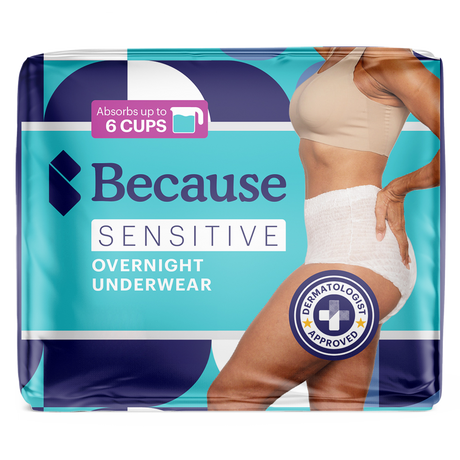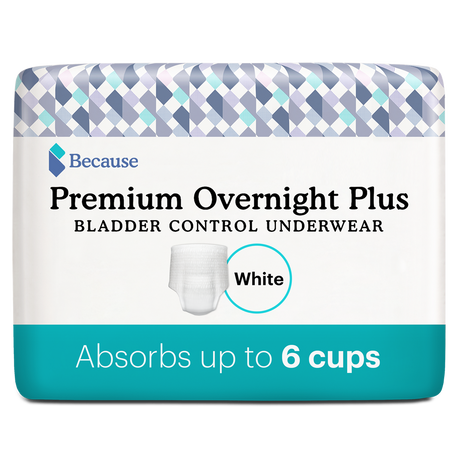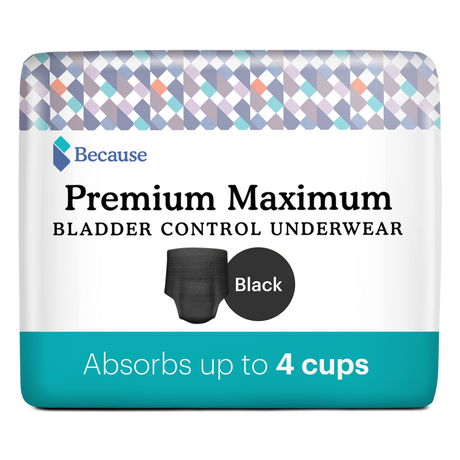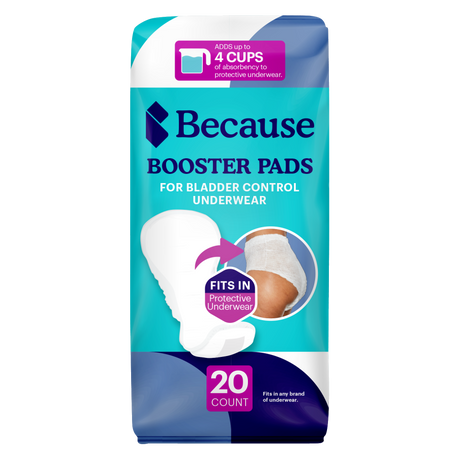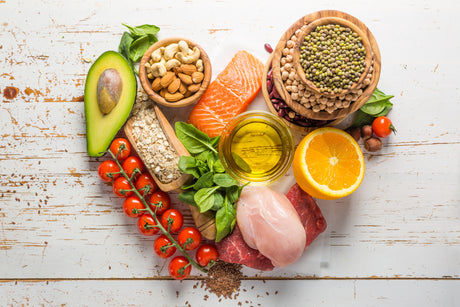Kidney stones, mineral and salt deposits that can form in our kidneys, are a source of discomfort and pain for countless individuals. While their ability to cause excruciating agony is well-established, there are lingering questions surrounding the potential link between kidney stones and another common urinary problem: urinary incontinence.
Urinary incontinence affects millions of people worldwide, leading many to wonder whether kidney stones could be a contributing factor. In this blog, we aim to explore the truth behind this belief and separate fact from fiction.
Are kidney stones truly responsible for urinary incontinence, or is this notion merely a popular misconception? To shed light on this matter, we will delve into the nature of kidney stones, the physiology of urinary incontinence, and the existing scientific research that investigates any potential correlation between the two.

Understanding Kidney Stones
Kidney stones, scientifically known as nephrolithiasis, are small, hard formations that can vary in size, ranging from as tiny as a grain of sand to as large as a marble. Kidney stones typically develop when certain substances, such as a high level of minerals (calcium), oxalate, uric acid, or cystine, accumulate and crystallize within the kidneys.
While they can occur in anyone, several factors can increase the risk of developing kidney stones, including a family medical history of the condition, dehydration, certain dietary factors, obesity, and certain health problems. When kidney stones grow in size or migrate into the urinary tract, they can cause symptoms such as intense pain and discomfort, often requiring medical intervention for treatment and removal.
When large stones develop there may be a need for immediate medical attention. Other signs that a kidney stone requires immediate emergency treatment are: a fever or chills, excruciating pain, high-risk chronic conditions such as diabetes or kidney disease, burning sensation while urinating, and cloudy or red urine.
Another type of deposit one can develop is a bladder stone. Bladder stones and kidney stones are not the same thing, although small kidney stones may travel down to the bladder and can grow into bladder stones. Bladder stones form when the bladder doesn’t empty completely. The leftover urine then becomes crystalized forming stones. Bladder stones are also more likely to have occurred as a result of an obstruction or nerve damage as the result of a stroke, spinal cord injury, Parkinson’s disease, diabetes, or a number of other problems and are more common in men.

What is Urinary Incontinence?
Urinary incontinence refers to the involuntary loss of bladder control, resulting in a person's inability to control their bladder function. It is a common condition that affects individuals of all ages, although it is more prevalent among older adults. There are many different types of urinary incontinence including stress incontinence, urge incontinence (also called overactive bladder), overflow incontinence, functional incontinence, and mixed incontinence. The causes of urinary incontinence can vary, ranging from weakened pelvic floor muscles, hormonal changes, and nerve damage to urinary tract infections, certain medications, and underlying health conditions. The impact of urinary incontinence extends beyond the physical discomfort, often leading to emotional distress, social isolation, and a decreased quality of life.
However, it is important to note that urinary incontinence is a treatable condition, and various interventions, such as lifestyle changes, pelvic floor exercises, medications, and in some cases, surgical procedures, can effectively manage or alleviate its symptoms.
The Link Between Kidney Stones and Incontinence
Bladder Obstruction
Bladder obstruction resulting from kidney stones can indeed contribute to urinary incontinence. When a kidney stone obstructs the flow of urine from the kidneys to the bladder or from the bladder through the urethra, it can lead to a buildup of pressure in the urinary system. This increased pressure can interfere with the normal functioning of the bladder, compromising its ability to store and empty urine effectively. As a result, individuals may experience symptoms of urinary incontinence, such as urgency, frequency, and even leakage of urine. The presence of a kidney stone can irritate the bladder and cause abnormal contractions, further exacerbating the problem.
Additionally, bladder obstruction from a kidney stone can lead to urinary tract infections, which can also contribute to urinary incontinence. Therefore, while kidney stones themselves may not directly cause urinary incontinence, the obstruction they create in the urinary system can disrupt bladder function and contribute to the development or worsening of incontinence symptoms.
Bladder Irritation
Kidney stones can also lead to bladder irritation, causing discomfort and potential urinary symptoms. When kidney stones pass from the kidneys to the bladder through the ureters, they can cause friction and irritation along the urinary tract. The sharp edges or rough surfaces of the stones can scrape against the bladder lining, leading to inflammation and irritation. This bladder irritation can result in various symptoms, including a persistent urge to urinate, a feeling of incomplete emptying of the bladder, and even pain or discomfort in the lower abdomen. In some cases, bladder irritation from kidney stones can also trigger abnormal contractions of the bladder muscles, leading to urgency and frequency of urination.
Furthermore, the presence of kidney stones can increase the risk of developing urinary tract infections, which further exacerbate bladder irritation and may cause additional urinary symptoms.
Changes in Bladder Muscle Function
Kidney stones can potentially result in changes to bladder muscle function, leading to disruptions in normal bladder activity. The presence of kidney stones in the urinary tract can cause irritation and inflammation of the bladder lining. This irritation can trigger abnormal contractions of the bladder muscles, leading to increased muscle activity even when the bladder is not full. These irregular contractions are known as bladder spasms.
Additionally, kidney stones can obstruct the flow of urine and cause urine to back up into the bladder, leading to distension and stretching of the bladder muscles. Over time, this distension can affect the muscle tone and elasticity of the bladder, potentially causing bladder dysfunction and impaired urinary control. Consequently, kidney stones have the potential to disrupt the normal functioning of bladder muscles, contributing to changes in bladder muscle function and the development of urinary symptoms.
Medications for Kidney Stones That May Affect Bladder Control
Medications used to treat kidney stones can potentially affect bladder control, although the specific impact may vary depending on the medication and individual factors. Certain medications, such as alpha-blockers, are commonly prescribed to relax the smooth muscles in the urinary tract, including the bladder and ureters. By doing so, these medications can help facilitate the passage of kidney stones by widening the ureters and easing the flow of urine. While alpha-blockers primarily target the muscles in the urinary tract, they can also affect bladder control to some extent. Some individuals may experience temporary side effects such as increased urinary frequency or urgency.
Additionally, certain medications used to manage underlying conditions associated with kidney stones, such as diuretics or medications for high blood pressure, may increase urine production or affect fluid balance, potentially impacting bladder control. It's important to discuss any concerns or potential side effects with a doctor or healthcare provider when considering or taking medications for kidney stones to ensure appropriate management of bladder control and overall well-being.

Treatment, Management, and Prevention
When it comes to kidney stones, proper treatment, management, and prevention strategies play a crucial role in alleviating symptoms, preventing recurrence, and promoting overall kidney health. From small stones that pass on their own to larger, more complex stones that require medical intervention, various treatment options are available, including medication, minimally invasive procedures, and surgery.
Additionally, adopting certain lifestyle modifications, such as staying hydrated, following a balanced diet, reducing salt and oxalate intake, and maintaining a healthy weight, can aid in preventing the formation of kidney stones. Regular monitoring, dietary adjustments, and understanding one's risk factors can contribute to long-term management and prevention, ultimately empowering individuals to take control of their kidney health and minimize the impact of kidney stones.
Managing Urinary Incontinence Symptoms
Managing urinary incontinence symptoms involves a multifaceted approach aimed at improving bladder control and minimizing the impact of involuntary urine leakage. One of the primary strategies is pelvic floor muscle exercises, also known as Kegel exercises, which help strengthen the muscles responsible for bladder control. Behavioral techniques such as bladder training, scheduled voiding, and fluid management can also be effective in regaining control over urinary function.
In addition, certain lifestyle modifications, such as maintaining a healthy weight, avoiding bladder irritants like caffeine and alcohol, and practicing good hygiene, can contribute to symptom management. In more severe cases, medications may be prescribed to relax the bladder or reduce urinary urgency. In conjunction with these strategies, the use of absorbent pads or protective garments can provide individuals with confidence and security during daily activities.
Ultimately, the management of urinary incontinence symptoms requires a tailored approach, and consulting with healthcare professionals specializing in urology or continence care can provide personalized guidance and support.
Treating Kidney Stones + Its Impact on Incontinence
Treating kidney stones not only aims to alleviate the pain and discomfort associated with their presence but can also have a positive impact on urinary incontinence. The choice of treatment depends on the size, location, and composition of the kidney stones. Small stones often pass naturally with increased fluid intake and pain management. However, larger or more complex stones may require intervention, such as extracorporeal shock wave lithotripsy (ESWL), ureteroscopy, or surgical removal.
By successfully treating and removing kidney stones, the potential bladder obstruction is resolved, allowing for improved urinary flow and reducing the risk of bladder irritation and abnormal bladder muscle contractions. This, in turn, can alleviate symptoms of urinary urgency, frequency, and leakage associated with urinary incontinence. Therefore, by addressing the underlying cause of bladder dysfunction resulting from kidney stones, the treatment process can positively impact and potentially resolve urinary incontinence symptoms.
Lifestyle Changes to Reduce the Risk of Kidney Stones and Incontinence
Making certain lifestyle changes can significantly reduce the risk of both kidney stones and urinary incontinence. Staying well-hydrated is crucial, as it helps dilute urine and prevents the concentration of minerals that can form stones. Aim to drink an adequate amount of water throughout the day, especially in warmer climates or during physical activity.
Following a balanced diet rich in fruits, vegetables, and whole grains while limiting sodium, oxalate, and animal protein intake can also lower the risk of stone formation. Additionally, maintaining a healthy weight and engaging in regular physical activity contribute to overall kidney health and reduce the likelihood of stone development.
When it comes to urinary incontinence prevention, maintaining a healthy weight and engaging in pelvic floor exercises can help strengthen the muscles responsible for bladder control. Avoiding bladder irritants such as caffeine, alcohol, and carbonated beverages can also be beneficial.
By incorporating these lifestyle changes into daily routines, individuals can take proactive steps towards reducing the risk of both kidney stones and urinary incontinence while promoting overall urinary and kidney health.

The Importance of Early Detection and Treatment
Early detection and treatment play a crucial role in managing kidney stones and urinary incontinence effectively. Detecting kidney stones early allows for prompt intervention, preventing potential complications such as infection, kidney damage, and severe pain. Early diagnosis also enables healthcare professionals to determine the size, location, and composition of the stones, which guides treatment decisions.
By initiating treatment early, whether through conservative measures, medication, or minimally invasive surgical procedures, the chances of successfully passing or removing the stones and achieving relief from symptoms are significantly increased. Similarly, early detection of urinary incontinence allows for appropriate management strategies to be implemented promptly, reducing the impact on quality of life and preventing the progression of symptoms.
Seeking medical attention at the first signs of kidney stone-related pain or urinary incontinence symptoms is vital for early diagnosis, proper evaluation, and the formulation of an individualized treatment plan, ultimately maximizing the potential for successful outcomes and improved overall well-being.
Sources:
Mayo Clinic. (2022). Kidney stones: Symptoms & causes. Retrieved from https://www.mayoclinic.org/diseases-conditions/kidney-stones/symptoms-causes/syc-20355755
UCI Urology. (n.d.). When should you go to the hospital for kidney stones? Retrieved from https://urology.uci.edu/when_should_you_go_to_the_hospital_for_kidney_stones_kidney_stone_surgery_recovery.shtml
NHS. (2019). Bladder stones. Retrieved from https://www.nhs.uk/conditions/bladderstones/#:~:text=Bladder%20stones%20are%20hard%20lumps,the%20bladder%20when%20you%20pee.
Mayo Clinic. (2022). Bladder stones: Symptoms & causes. Retrieved from https://www.mayoclinic.org/diseases-conditions/bladder-stones/symptoms-causes/syc-20354339
NHS. (2021). Treatment for urinary incontinence. Retrieved from https://www.nhs.uk/conditions/urinary-incontinence/treatment/
Health Service Executive. (n.d.). Surgery and procedures for urinary incontinence. Retrieved from https://www2.hse.ie/conditions/urinary-incontinence/surgery-and-procedures/
Mayo Clinic. (2022). Ureteral obstruction: Symptoms & causes. Retrieved from https://www.mayoclinic.org/diseases-conditions/ureteral-obstruction/symptoms-causes/syc20354676#:~:text=A%20ureteral%20obstruction%20is%20a,kidney%20function%2C%20sepsis%20and%20death.
Healthline. (n.d.). Bladder spasms. Retrieved from https://www.healthline.com/health/bladder-spasms
NYU Langone Health. (n.d.). Medications & dietary changes for kidney stones. Retrieved from https://nyulangone.org/conditions/kidneystones/treatments/medications-dietary-changes-for-kidney-stones
National Kidney Foundation. (n.d.). Diet and kidney stones. Retrieved from https://www.kidney.org/atoz/content/diet

